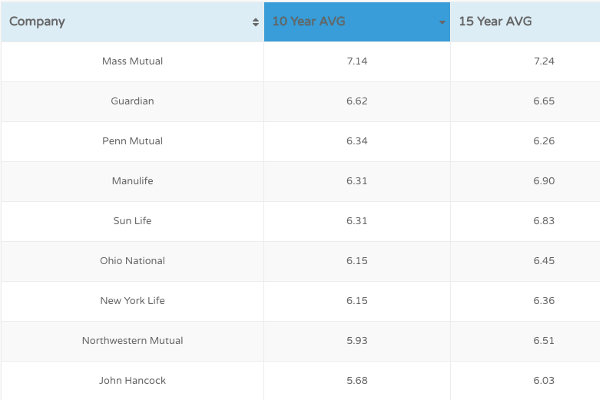Indexed Universal Life (IUL) insurance is gaining popularity as a versatile and flexible option for individuals seeking permanent life insurance coverage. It combines the benefits of a life insurance policy with the potential for cash value growth linked to the performance of a selected stock market index. However, understanding the cost structure and factors that influence the premiums of IUL policies is essential for making informed decisions. In this article, we will decode the how much does an IUL cost, shedding light on what you need to know.
Age and Health: Your age and health play a significant role in determining the cost of your IUL policy. Generally, younger and healthier individuals tend to pay lower premiums compared to older and less healthy individuals.
Gender: Historically, women have enjoyed lower life insurance premiums than men due to their longer life expectancy. However, the impact of gender on IUL premiums may vary among insurance companies.
Policy Riders and Options: IUL policies offer various optional riders and features that can enhance coverage but also increase the cost. These riders may include long-term care benefits, accelerated death benefits, or additional coverage for critical illness.
Cash Value Growth Potential: The potential for cash value growth is a key feature of IUL policies. However, policies with higher cash value growth potential may have higher premium costs. It's important to strike a balance between growth potential and affordability.
Click below to get a Quote Now
Get Me A Quote
Premium Illustrations: Request premium illustrations from each company to compare projected costs over the life of the policy. Pay attention to the assumed interest rates and index performance used in the illustrations.
Surrender Charges and Policy Loans: Understand the surrender charges and policy loan provisions of each policy. Surrender charges can affect your ability to access cash value in the early years, while policy loans may incur interest charges.
Guaranteed Minimum Premiums: Some IUL policies have guaranteed minimum premium requirements to keep the policy in force. Ensure you understand these requirements and their potential impact on your long-term affordability.
Company Ratings and Financial Stability: Consider the financial strength and ratings of the insurance companies offering IUL policies. Strong and stable companies are more likely to honor their commitments and provide reliable coverage.
Seek Professional Advice: Consult with a licensed insurance agent or financial advisor who specializes in life insurance to guide you through the decision-making process. They can help analyze your specific needs and recommend suitable options.
Compare Multiple Quotes: Obtain quotes from different insurance companies offering IUL policies. Ensure that the quotes provide detailed information on premium costs, death benefit amounts, and any optional riders or features.
Read and Understand the Policy: Carefully review the policy contract, including all terms, conditions, and exclusions. Understand the policy's provisions for premium payments, cash value growth, and death benefit payouts.
Click below to get a Quote Now
Get Me A Quote
Understanding Premiums and Cost Factors:
Death Benefit Amount: The death benefit is the amount of coverage that will be paid out to beneficiaries upon the insured's death. The higher the death benefit, the higher the premiums are likely to be.Age and Health: Your age and health play a significant role in determining the cost of your IUL policy. Generally, younger and healthier individuals tend to pay lower premiums compared to older and less healthy individuals.
Gender: Historically, women have enjoyed lower life insurance premiums than men due to their longer life expectancy. However, the impact of gender on IUL premiums may vary among insurance companies.
Policy Riders and Options: IUL policies offer various optional riders and features that can enhance coverage but also increase the cost. These riders may include long-term care benefits, accelerated death benefits, or additional coverage for critical illness.
Cash Value Growth Potential: The potential for cash value growth is a key feature of IUL policies. However, policies with higher cash value growth potential may have higher premium costs. It's important to strike a balance between growth potential and affordability.
Invest wisely. Decode IUL costs today!
Click below to get a Quote Now
Get Me A Quote
Evaluating Costs:
When comparing IUL policies from different insurance companies, it's crucial to evaluate the costs holistically. Here are some factors to consider:Premium Illustrations: Request premium illustrations from each company to compare projected costs over the life of the policy. Pay attention to the assumed interest rates and index performance used in the illustrations.
Surrender Charges and Policy Loans: Understand the surrender charges and policy loan provisions of each policy. Surrender charges can affect your ability to access cash value in the early years, while policy loans may incur interest charges.
Guaranteed Minimum Premiums: Some IUL policies have guaranteed minimum premium requirements to keep the policy in force. Ensure you understand these requirements and their potential impact on your long-term affordability.
Company Ratings and Financial Stability: Consider the financial strength and ratings of the insurance companies offering IUL policies. Strong and stable companies are more likely to honor their commitments and provide reliable coverage.
Making an Informed Decision:
Determine Your Goals and Risk Tolerance: Before purchasing an IUL policy, clarify your financial goals, risk tolerance, and liquidity needs. This will help you select a policy that aligns with your objectives.Seek Professional Advice: Consult with a licensed insurance agent or financial advisor who specializes in life insurance to guide you through the decision-making process. They can help analyze your specific needs and recommend suitable options.
Compare Multiple Quotes: Obtain quotes from different insurance companies offering IUL policies. Ensure that the quotes provide detailed information on premium costs, death benefit amounts, and any optional riders or features.
Read and Understand the Policy: Carefully review the policy contract, including all terms, conditions, and exclusions. Understand the policy's provisions for premium payments, cash value growth, and death benefit payouts.
Conclusion:
Decoding the cost of Indexed Universal Life Insurance is crucial for making an informed decision about this type of policy. Understanding the factors that influence premiums, evaluating costs from multiple insurance companies, and seeking professional advice are key steps to finding an IUL policy that aligns with your financial goals. Remember to carefully review the policy contract and ensure it meets your coverage needs. By approaching the cost of IUL insurance with knowledge and careful consideration, you can make a confident choice for your financial future.Invest wisely. Decode IUL costs today!
Click below to get a Quote Now
Get Me A Quote




